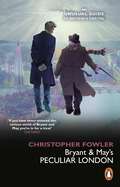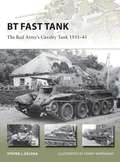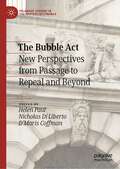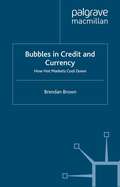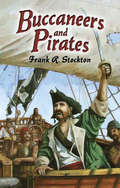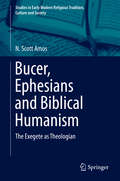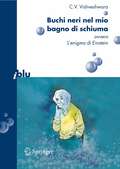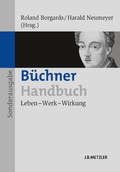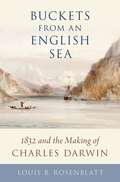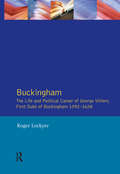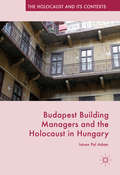- Table View
- List View
Bryant & May’s Peculiar London
by Christopher FowlerAs the nation's oldest serving detectives, we know more about London than almost anyone. After all, we've been walking its streets and impulsively arresting its citizens for decades. Who better to take you through its less savoury side? We'll be chatting about odd buildings, odder characters, lost venues, forgotten disasters, confusing routes, dubious gossip, illicit pleasures and hidden pubs. We'll be making all sorts of odd connections and showing you why it's almost impossible to separate fact from fiction in London. With the help of some of our more disreputable friends, each an argumentative and unreliable expert in his or her own dodgy field, we'll explain why some streets have genders, why only two Londoners got to meet Dracula, how a department store and a prison played tricks on your mind, when a theatre got stranded in the past, how a building vanished in plain sight, what excited Charlotte Brontë about the city and where the devils hide in London. We hope to capture something of the city's restless spirit by shamelessly and wilfully wandering off course. It goes without saying that we'll bluff and bamboozle you along the way but that's all part of the fun. History is what you remember. London is what you forget (and we've forgotten a lot). So please do join us on this magical mystery tour of our city. Who knows where we'll end up?
BT Fast Tank: The Red Army’s Cavalry Tank 1931–45 (New Vanguard #237)
by Steven J. ZalogaWhen the Red Army needed to mechanize its cavalry branch in the 1930s, the BT fast tank was its solution. Based on the American Christie high-speed tank, the Red Army began a program to adapt the design to its own needs. Early versions were mechanically unreliable and poorly armed but by the mid-1930s, the BT-5 emerged, armed with an excellent dual-purpose 45mm gun. It saw its combat debut in the Spanish Civil War in 1937 and was later used in the border battles with the Japanese Kwangtung Army in the late 1930s. The final production series, the BT-7, was the most refined version of the family.One of the most common types in Red Army service in the first years of the Second World War, BT tanks saw extensive combat in Poland, Finland, and the opening phases of Operation Barbarossa in 1941 and latterly during the 1945 campaign against the Japanese in Manchuria – this is the story of their design and development history.
BT Fast Tank: The Red Army’s Cavalry Tank 1931–45 (New Vanguard #237)
by Steven J. Zaloga Henry MorsheadWhen the Red Army needed to mechanize its cavalry branch in the 1930s, the BT fast tank was its solution. Based on the American Christie high-speed tank, the Red Army began a program to adapt the design to its own needs. Early versions were mechanically unreliable and poorly armed but by the mid-1930s, the BT-5 emerged, armed with an excellent dual-purpose 45mm gun. It saw its combat debut in the Spanish Civil War in 1937 and was later used in the border battles with the Japanese Kwangtung Army in the late 1930s. The final production series, the BT-7, was the most refined version of the family.One of the most common types in Red Army service in the first years of the Second World War, BT tanks saw extensive combat in Poland, Finland, and the opening phases of Operation Barbarossa in 1941 and latterly during the 1945 campaign against the Japanese in Manchuria – this is the story of their design and development history.
The Bubble Act: New Perspectives from Passage to Repeal and Beyond (Palgrave Studies in the History of Finance)
by Helen Paul Nicholas Di Liberto D’Maris CoffmanThis book reassesses the actual effects of the Bubble Act, still popularly associated with the bursting of the South Sea Bubble. The book builds on the foundational work of Ron Harris to discuss the act’s effect on corporate governance, literary culture, colonial law, and the Industrial Revolution. The Bubble Act was deemed an empty letter within England itself as it was rarely used in legal proceedings. Several chapters consider whether this was the case outside England, from Scotland to the Americas, India, and Africa. Others assess the impact of the act, both on literary culture and in the history of economic thought. The act has been conceptualized as a brake on economic development or of little consequence. This edited collection offers a timely reassessment of the Bubble Act and its legacy.
Bubbles in Credit and Currency: How Hot Markets Cool Down
by B. BrownDrawing on behavioral finance theory and contemporary experience, this book explores how bubbles form and subsequently burst. The author introduces a new concept of swings in market temperature defined by the extent of heterogeneity of opinion and soft irrationality, and examines the importance of these swings in the credit markets.
Bubonic Plague in Early Modern Russia: Public Health and Urban Disaster
by John T. AlexanderJohn T. Alexander's study dramatically highlights how the Russian people reacted to the Plague, and shows how the tools of modern epidemiology can illuminate the causes of the plague's tragic course through Russia. Bubonic Plauge in Early Modern Russia makes contributions to many aspects of Russian and European history: social, economic, medical, urban, demographic, and meterological. It is particularly enlightening in its discussion of eighteenth-century Russia's emergent medical profession and public health institutions and, overall, should interest scholars in its use of abundant new primary source material from Soviet, German, and British archives.
Buccaneer: The Pirate Adventures Of Hector Lynch (Pirate #2)
by Tim SeverinBuccaneer by Tim Severin is the second swashbuckling adventure in the Pirate series. Sailing across the Caribbean, Hector Lynch falls into the hands of the notorious buccaneer, Captain John Coxon, who mistakes him for the nephew of Sir Thomas Lynch, Governor of Jamaica. Hector encourages the error so that his friends Jacques and Dan can go free. Coxon then delivers Hector to Sir Henry Morgan, a bitter enemy of Governor Lynch, expecting to curry favour with Morgan, but is publicly humiliated when the deception is revealed. From then on, Hector has a dangerous enemy, and Coxon seeks to revenge himself on Hector . . .Befriended by Jezreel, an ex-prize fighter, Hector meets up again with his friends Jacques and Dan, and the four comrades join the great buccaneer raid, which marches through the jungle along the Panama coastline. But their expedition is soon interrupted - with deadly consequences.
A Buccaneer At Heart: The Adventurers Quartet (The Adventurers Quartet #2)
by Stephanie LaurensUnexpected love—plus passion, intrigue, and danger—challenge our hero to embrace his true nature.
Buccaneers and Pirates
by Frank R. StocktonTrue tales of history's sea-faring scoundrels and their daring deeds, Buccaneers and Pirates recounts the legends of the notorious brigands who plundered North American coasts from the sixteenth to nineteenth centuries.Meet Blackbeard, who reveled in shooting down members of his own crew; Henry Morgan, the infamous pirate who eventually became Deputy-Governor of Jamaica; and Jean Lafitte, master of an enormously profitable piracy ring — even though he only boarded a ship twice in his life. Recount the horrors of the most infamous buccaneer of them all, Captain Kidd, whose evil exploits continue to raise goose bumps. You'll also become acquainted with a cast of lesser known — but equally intriguing — pirates, including two women whose courage and cunning were a match for any man's.Often humorous, sometimes chilling, yet always fascinating, these authentic stories form a wonderfully readable history of piracy's beginnings and its rapid spread through the coastal waters of the New World.
Buccaneers, Explorers and Settlers: British Enterprise and Encounters in the Pacific, 1670-1800
by Glyndwr WilliamsBuccaneers, Explorers and Settlers studies how during 'the long 18th century' British incursions into the Pacific transformed Europe's knowledge of that great ocean. Buccaneers devastated Spanish settlements and shipping in the South Sea, and the accounts by Dampier and his companions of their exploits became best-sellers. Anson's circumnavigation carried on the tradition of commerce-raiding, but it represented the beginnings of a more official interest in the Pacific and its resources. Later in the 18th century the hopes of speculative geographers that unknown continents and sea-passages existed in the Pacific prompted a series of expeditions by Cook and his contemporaries. New peoples were discovered as well as new lands, and the voyages led to changing perceptions of their lifestyles. Exploration was followed by trade and settlement in which Cook's associates such as Banks played a leading part. Before the end of the century there were British settlements in New South Wales, Nootka Sound had become a centre of international dispute, and across the Pacific traders, whalers and missionaries were following the tracks of the explorers.
Buccaneers, Explorers and Settlers: British Enterprise and Encounters in the Pacific, 1670-1800
by Glyndwr WilliamsBuccaneers, Explorers and Settlers studies how during 'the long 18th century' British incursions into the Pacific transformed Europe's knowledge of that great ocean. Buccaneers devastated Spanish settlements and shipping in the South Sea, and the accounts by Dampier and his companions of their exploits became best-sellers. Anson's circumnavigation carried on the tradition of commerce-raiding, but it represented the beginnings of a more official interest in the Pacific and its resources. Later in the 18th century the hopes of speculative geographers that unknown continents and sea-passages existed in the Pacific prompted a series of expeditions by Cook and his contemporaries. New peoples were discovered as well as new lands, and the voyages led to changing perceptions of their lifestyles. Exploration was followed by trade and settlement in which Cook's associates such as Banks played a leading part. Before the end of the century there were British settlements in New South Wales, Nootka Sound had become a centre of international dispute, and across the Pacific traders, whalers and missionaries were following the tracks of the explorers.
Bucer, Ephesians and Biblical Humanism: The Exegete as Theologian (Studies in Early Modern Religious Tradition, Culture and Society #7)
by N. Scott AmosThis book describes Martin Bucer (1491-1551) as a teacher of theology, focusing on his time as Regius Professor of Divinity at the University of Cambridge between 1549 and 1551. The book is centered on his 1550 Cambridge lectures on Ephesians, and investigates them in their historical context, exploring what sort of a theologian Bucer was. The lectures are examined to find out how they represent Bucer’s method of teaching and “doing” theology, and shed light on the relationship between biblical exegesis and theological formulation as he understood it. Divided into two interconnected parts, the book first sets the historical context for the lectures, including a broad sketch of scholastic method in theology and the biblical humanist critique of that method. It then closely examines Bucer’s practice in the Cambridge lectures, to show the extent to which he was a theologian of the biblical humanist school, influenced by the method Erasmus set forth in the Ratio Verae Theologiae in which true theology begins, ends, and is best “done” as an exercise in the exegesis of the Word of God.
Buch Und Bild - Schrift Und Zeichnung: Schreiben Und Lesen In Der Kunst Des 20. Jahrhunderts (Wie Wir Lesen - Zur Geschichte, Praxis Und Zukunft Einer Kulturtechnik Ser. #4)
by Cathrin Klingsöhr-LeroyBuchi neri nel mio bagno di schiuma ovvero l'enigma di Einstein (I blu)
by C.V. Vishveshwara"Le bolle stavano turbinando tutto intorno a me e massaggiavano il mio corpo ... Mentre me la godevo in questo fantastico bagno di bolle, i miei occhi si fecero pesanti e mi lasciaii trasportare in un dormiveglia sublimamente estatico". Così inizia l’incontro di Alfie con una vasca da bagno eccezionale e rivelatrice, acquistata da un vicino misterioso di nome Al. L’Enigma di Einstein, ovvero buchi neri nel mio bagno di schiuma, racconta la storia della teoria della gravitazione, dai suoi primordi fino agli ultimi sviluppi in astrofisica, focalizzandosi sulla teoria della relatività generale di Albert Einstein e sulla fisica dei buchi neri. Tramite conversazioni avvincenti e diagrammi scarabocchiati su tovaglioli di carta, si susseguono a ruota i rudimenti della relatività, dello spazio-tempo e di molti aspetti della fisica moderna. In scenette narrate con abilità pedagogica e notevole talento letterario, il lettore s’imbatterà nelle lezioni informali che un astrofisico cosmopolita tiene al suo amico Alfie, organizzatore free lance di progetti di ricerca. Unitevi al divertimento intellettuale ed emozionatevi con le idee spumeggianti, mentre con la fantasia vi godete un rilassante bagno in questa vasca magica!
Büchner-Handbuch: Leben – Werk – Wirkung
Büchner wieder lesen, heißt die eigene Lage schärfer sehn. So umschreibt Christa Wolf die ungebrochene Aktualität Georg Büchners, dessen vielschichtiges uvre bis heute immer wieder zum Nachdenken auffordert. Neben Beiträgen zur Rezeption und Wirkung bietet das Handbuch detaillierte Analysen der Einzelwerke, die sowohl die Entstehungs- und Gattungsgeschichte als auch die gängigen Forschungsansätze berücksichtigen. Zudem beleuchten interpretatorische Querschnitte durch das Gesamtwerk übergreifende Themenfelder wie z. B. Religion, Biopolitik, Geschlecht, Recht und Strafe, Melancholie und Wahnsinn, Automaten und Marionetten, Dokumentation und Fiktion.
A Bucket of Sunshine: Life on a Cold War Canberra Squadron (History Press Ser.)
by Wing Commander Mike BrookeA Bucket of Sunshine - a term used for the use of a nuclear bomb - is a firsthand insight into life in the mid-1960s on a RAF Canberra nuclear-armed squadron in West Germany on the frontline in the Cold War. Mike Brookes describes not only the technical aspect of the aircraft and its nuclear and conventional roles and weapons, but also majors on the low-level flying that went with the job of being ready to go to war at less than three minutes notice. Brooke tells his story warts and all, with many amusing overtones, in what was an extremely serious business when the world was standing on the brink of nuclear conflict. The English-Electric Canberra was a first-generation jet-powered light bomber manufactured in large numbers in the 1950s. The Canberra could fly at a higher altitude than any other bomber through the 1950s and set a world altitude record of 70,310 feet. Due to its ability to evade early interceptors and providing a significant performance advancement over piston-engine bombers, the Canberra was a popular export product and served with many nations. Although jet powered, the Canberra design philosophy was very much in the Mosquito mould, providing room for a substantial bomb load, fitting two of the most powerful engines available, and wrapping it in the most compant and aerodynamic package possible. Rather than devote space and weight to defensive armament, the Canberra was designed to fly fast and high enough to avoid air-to-air combat entirely.
Buckets from an English Sea: 1832 and the Making of Charles Darwin
by Louis B. RosenblattDarwin did not discover evolution. He didn't trip over it on the way to somewhere else the way Columbus discovered the New World. Like the atom, planetary orbits, and so many other scientific constructs, evolution was invented in order to explain striking phenomena. And it has been most successful. A century and a half has not simply confirmed Darwin's work, it has linked evolution to the mechanisms of life on the molecular scale. It is what life does. Where Darwin had drawn his theories from forest and field, we now set them in the coiling and uncoiling of twists of DNA, linking where they might, with a host of molecular bits and pieces scurrying about. Darwin, himself, however, has been a closed story. A century and a half of study of the man and his work, including close readings of his books, his notebooks and letters, and even the books he read, has led to a working appreciation of his genius. The 'success' of this account has, however, kept us from seeing several important issues: most notably, why did he pursue evolution in the first place? Buckets from an English Sea offers a new view of what inspired Darwin and provoked his work. Stunning events early in the voyage of the Beagle challenged his deeply held conviction that people are innately good. This study of 1832 highlights the resources available to the young Darwin as he worked to secure humanity's innate goodness.
Buckets from an English Sea: 1832 and the Making of Charles Darwin
by Louis B. RosenblattDarwin did not discover evolution. He didn't trip over it on the way to somewhere else the way Columbus discovered the New World. Like the atom, planetary orbits, and so many other scientific constructs, evolution was invented in order to explain striking phenomena. And it has been most successful. A century and a half has not simply confirmed Darwin's work, it has linked evolution to the mechanisms of life on the molecular scale. It is what life does. Where Darwin had drawn his theories from forest and field, we now set them in the coiling and uncoiling of twists of DNA, linking where they might, with a host of molecular bits and pieces scurrying about. Darwin, himself, however, has been a closed story. A century and a half of study of the man and his work, including close readings of his books, his notebooks and letters, and even the books he read, has led to a working appreciation of his genius. The 'success' of this account has, however, kept us from seeing several important issues: most notably, why did he pursue evolution in the first place? Buckets from an English Sea offers a new view of what inspired Darwin and provoked his work. Stunning events early in the voyage of the Beagle challenged his deeply held conviction that people are innately good. This study of 1832 highlights the resources available to the young Darwin as he worked to secure humanity's innate goodness.
Buckingham: The Life and Political Career of George Villiers, First Duke of Buckingham 1592-1628
by Roger LockyerRecounts the life of the first Duke of Buckingham, describes his relationships with James I and Charles I, and examines his role in English politics.
Buckingham: The Life and Political Career of George Villiers, First Duke of Buckingham 1592-1628
by Roger LockyerRecounts the life of the first Duke of Buckingham, describes his relationships with James I and Charles I, and examines his role in English politics.
Buckingham Palace Gardens: A royal mystery from the heart of Victorian London (Thomas Pitt Mystery #25)
by Anne PerryCan Pitt find the killer stalking the palace corridors? In the twenty-fifth compelling crime novel in Anne Perry's bestselling Pitt mystery series, Inspector Thomas Pitt must navigate the upper echelons of society if he is to find a murderer bold enough to kill in Buckingham Palace. Perfect for fans of C. J. Sansom and Sherlock Holmes.'Perry writes with an intelligence that's both refreshing and entertaining' - Arizona Republic Early one morning, Inspector Thomas Pitt is awoken by a message from his boss, Narraway. A maid has been murdered. The maid worked at Buckingham Palace and Narraway needs his most trusted man to deal with the investigation. The suspects are narrowed down to a group of guests, meeting with the Prince of Wales to discuss the funding for a huge project: the Cape to Cairo railway. If the murderer isn't found, the Queen will veto royal support for the scheme. It rests with Pitt to solve the murder - in doing so he must reconcile his own concept of justice with those who feel it is within their right to make their own laws, whatever the consequences. What readers are saying about Buckingham Palace Gardens: 'A first class murder mystery, good solid characters and period detail''Keep you guessing until the end''Five stars'
Buckinghamshire Murder & Crime (Murder And Crime Ser.)
by Scott HoughtonThis chilling collection of cases delves into the villainous deeds that have taken place in and around Buckinghamshire during its long history. Cases of robbery, murder and self-destruction are all examined as the darker side of the county’s past is exposed. From John Owen, who slaughtered seven people, to the case of John Tawell, the last person to be hanged publicly in Aylesbury, this book sheds a new light on Buckinghamshire’s criminal past. Illustrated with a wide range of archive material and modern photographs, Buckinghamshire Murder & Crime is sure to fascinate both residents and visitors alike as these shocking events of the past are revealed for a new generation.
Buckinghamshire Murders
by Jonathan OatesThis chilling volume brings together more murderous tales that shocked not only the county but made headline news throughout the nation. Covering the length and breadth of Buckinghamshire, the featured cases include the brutal slaying of a family of seven in Denham in 1870, the killing of a butcher’s wife in Victorian Slough for which no one was ever found guilty, a double shooting at Little Kimble and a killing near Haddenham in 1828, in which a letter written a year later sealed the killers’ fate, and the doctor who disappeared in 1933 and whose decomposed corpse was found in Buckinghamshire woods the following year. This well-illustrated and enthralling text will appeal to everyone interested in true-crime history and the shadier side of Buckinghamshire’s past.
Budapest: Between East and West
by Victor SebestyenBudapest has always been an important place. Almost at the centre of Europe, it is at the crossroads of geographical regions and of civilizations, at the intersection of ancient trade routes. Mountains that gradually slope into gentle hills converge on a great river, the Danube, and the regions of Buda and Pest sprang up on either side.Throughout history the centre of gravity in Budapest and among Hungarians has shifted between this division of East and West - culturally, politically, emotionally. Invaders have come and gone, empires have conquered, occupied for centuries or decades, and left a few footprints behind: the remains of a Roman bath house complete with wonderfully preserved mosaics stand next to a Soviet-style 'five-year-plan' apartment block. The city bears the scars of the rise and fall of multiple empires, two world wars, fascism, Nazi German occupation, Soviet Communism. It has been home to some of the world's greatest writers, artists and musicians. Hungary is a place of extremes, a small country that has often in history punched well above its weight. At many moments, events that began in Budapest have proved to be of world significance. This is the story of that tumultuous, often divided, but always fascinating city.
Budapest Building Managers and the Holocaust in Hungary (The Holocaust and its Contexts)
by Istvan Pal AdamThis book traces the role of Budapest building managers or concierges during the Holocaust. It analyzes the actions of a group of ordinary citizens in a much longer timeframe than Holocaust scholars usually do. Thus, it situates the building managers’ activity during the war against the background of the origins and development of the profession as a by-product of the development of residential buildings since the forming of Budapest. Instead of presenting a snapshot from 1944, it shows that the building managers’ wartime acts were influenced and shaped by their long-term social aspiration for greater recognition and their economic expectations. Rather than focusing solely on pre-war antisemitism, this book takes into consideration other factors from the interwar period, such as the culture of tipping. In Budapest, during June 1944, the Jewish residents were separated not into a single closed ghetto area, but by the authorities designating dispersed apartment buildings as ‘ghetto houses’. The almost 2,000 buildings were spread throughout the entire city and the non-Jewish concierges serving in these houses represented the link between the outside and the inside world. The empowerment of these building managers happened as a side-effect of the anti-Jewish legislation and these concierges found themselves in an intermediary position between the authorities and the citizens.
